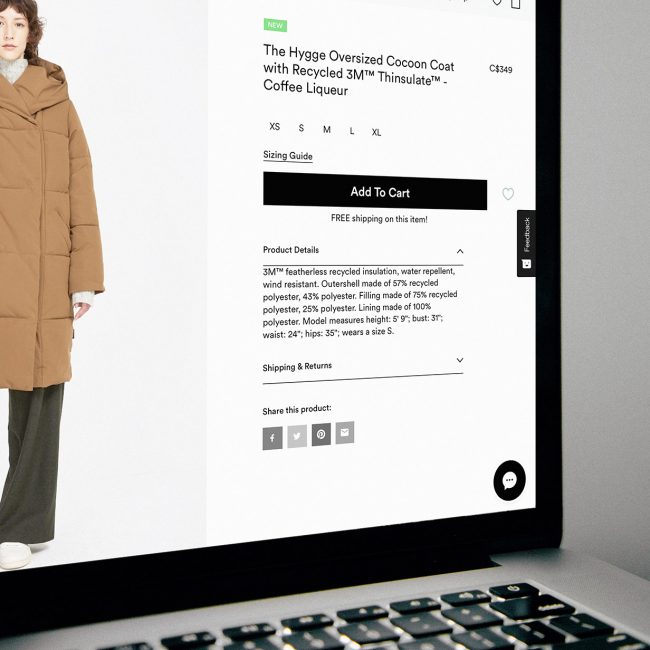
- 2 Min Read / Blog / 3.2.2020

A few weeks ago, I wrote about why digital user experiences still matter for traditional brick-and-mortar retail stores. At Punchkick, we’re adamant that if you’re company is selling things, then you must have a compelling digital strategy that regularly evolves to deliver the greatest value to your customers.
The reason we believe this is because consumers regularly prove that high quality digital user experiences drive them to spend more and remain loyal to brands longer. We know investing in digital can be costly, but we also have data to back up the ROI on digital investment. Here are five critical stats that should have you rethinking your go-to-market digital strategy.
If you’re struggling to make the case for your company to invest more in digital UX, we’re here to help.
According to consulting firm McKinsey, the large majority of today’s shoppers want and expect a personalized shopping experience. During the last decade, the promise of big data has led countless retailers to invest in building fresh loyalty programs designed to capture first-party data and deliver the degree of personalization their customers expect.
When brands are able to harness first-party data and personalize appropriately, those efforts can lead to a 20–30% boost in revenue.
—McKinsey
But, not every effort to capitalize on user data has succeeded. In 2013, the Chicago-area grocer Jewel scrapped its loyalty card (only to launch a new program not long after), causing many insiders to hypothesize that the grocer may have been overwhelmed by or unable to effectively utilize the data to its advantage.
When brands are able to harness first-party data and personalize appropriately, those efforts can lead to a 20–30% boost in revenue, according to McKinsey.
People will continue spending money at physical retail stores for a long time. However, the reasons customers ultimately choose to make a purchase at all have become heavily influenced by the digital world. Not every purchase is influenced by digital technology (such as social media, a brand’s website, or a mobile app, for example), but many are. According to Forrester, by 2022, 90% of those purchases influenced by digital will involve mobile.
Practically, if your brand presence on mobile isn’t living up to the bar set by your competition—or, more importantly, potential disruptors—there’s a very good chance you’ll be doomed to be irrelevant in the near future.
Mobile experiences not only help you predict why a customer may purchase from you, on the flip side, they can also highlight just how likely a prospective buyer is to abandon your brand entirely. Research from Google has found that two in three shoppers will actively choose not to buy goods from a brand after they’ve had a subpar experience with the brand on mobile.
Two in three shoppers will actively choose not to buy goods from a brand after they’ve had a subpar mobile experience with that brand.
The customer’s bar for good mobile UX is getting higher every day. If they struggle with your navigation or product search on mobile web, have to wait too long for a page to load, or perceive the checkout process as clunky, you’ll lose them to your more digitally refined competition.
This is something we couldn’t say just a handful of years ago. In today’s world, however, more than half (55%) of digital shoppers bought something online after discovering it on social media.
If there’s one truth about social media, it’s that social media is profoundly and significantly mobile-first. Whether you choose to promote your brand via social media or not, your conversion funnel needs to be fully optimized for mobile traffic. Anything less than excellent will decrease your odds of growing sales over time.
More than 90% of shoppers admit to using their mobile device as a second screen while shopping. That’s more than any other second-screen behavior, including using your phone to distract you from being bored. There are many ways physical retail brands can add value to the brick-and-mortar purchasing journey:
More likely than not, shoppers use their second screen to compare your deals with your competitions’. If you’re not interested in a race to the bottom, you’ll need to consider how to create incremental value for the customers who have found their way into your stores.
The mobile shopping wave has already crested. If your company continues to miss its digital KPIs—or you believe it could do much better—consider how optimizing for the mobile purchasing funnel using these five stats can boots revenue generation, customer satisfaction, and customer loyalty. During the last several years, Punchkick has had the opportunity to help companies of all stripes optimize their mobile purchasing funnel, including working through a series of design sprints to help Intuit’s TurboTax brand convert prospective customers, beginning with the owned content pages on their website.